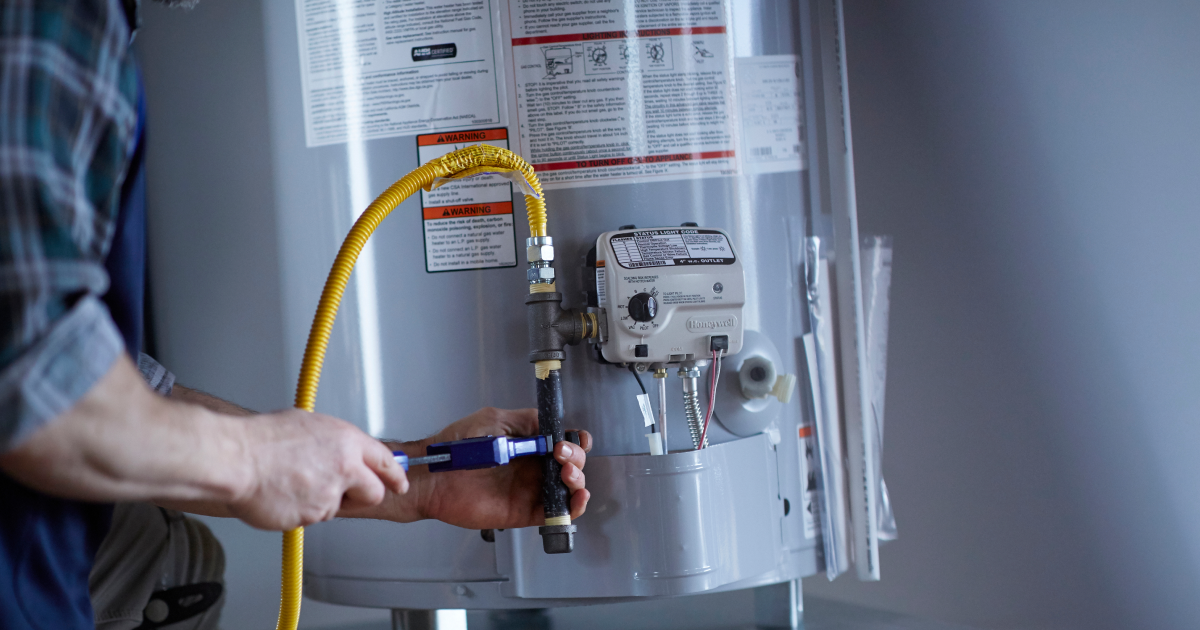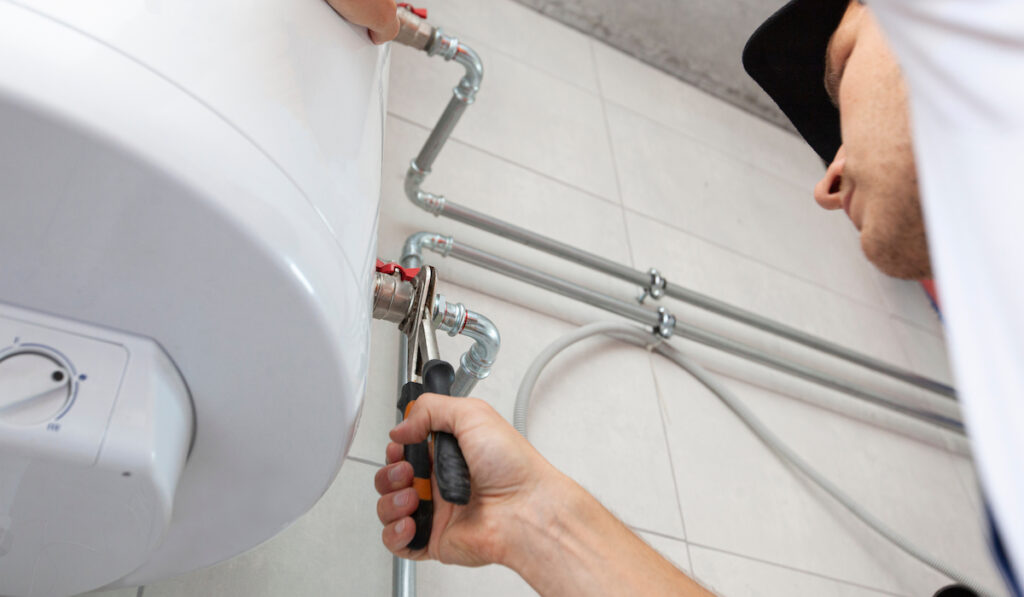We have stumbled upon this great article pertaining to Tips on Maintaining a Water Heater directly below on the web and reckoned it made sense to quickly share it with you on this page.

Warm water is necessary for daily convenience, whether it's for a rejuvenating shower or cleaning dishes. To guarantee your warm water system runs efficiently and lasts longer, normal maintenance is key. This article provides sensible pointers and insights on how to keep your home's warm water system to avoid interruptions and pricey repairs.
Introduction
Keeping your home's hot water system may appear daunting, but with a few straightforward actions, you can guarantee it operates smoothly for many years to find. This overview covers whatever from recognizing your warm water system to DIY upkeep pointers and recognizing when to hire expert assistance.
Value of Keeping Your Hot Water System
Routine upkeep not just expands the life-span of your warm water system yet also guarantees it runs successfully. Disregarding upkeep can bring about decreased efficiency, higher power expenses, and also premature failure of the system.
Signs Your Warm Water System Needs Upkeep
Understanding when your warm water system needs attention can avoid significant issues. Watch out for indications such as irregular water temperature level, strange noises from the heater, or rusty water.
Purging the Water Heater
Flushing your hot water heater removes sediment build-up, boosting performance and prolonging its life.
Checking and Changing Anode Rods
Anode rods avoid corrosion inside the tank. Checking and replacing them when worn out is crucial.
Facility Problems Calling For Specialist Help
Examples consist of major leaks, electric troubles, or if your water heater is continually underperforming.
Routine Specialist Maintenance Conveniences
Professional upkeep can include extensive examinations, tune-ups, and making sure conformity with security criteria.
Checking and Changing Temperature Level Settings
Readjusting the temperature setups guarantees optimum performance and safety.
Do It Yourself Tips for Maintenance
You can carry out several upkeep jobs on your own to keep your warm water system in leading condition.
Checking for Leakages
Frequently inspect pipelines and connections for leakages, as these can lead to water damages and greater expenses.
Understanding Your Warm Water System
Before diving right into maintenance tasks, it's valuable to comprehend the fundamental components of your warm water system. Usually, this consists of the hot water heater itself, pipelines, anode rods, and temperature controls.
Month-to-month Upkeep Tasks
Routine month-to-month checks can assist catch small issues prior to they escalate.
Checking Stress Alleviation Valves
Examining the pressure safety valve ensures it functions correctly and stops excessive stress buildup.
Protecting Pipelines
Insulating warm water pipelines decreases warm loss and can conserve energy.
When to Call a Specialist
While DIY upkeep is useful, some concerns require professional knowledge.
Verdict
Regular upkeep of your home's hot water system is necessary for efficiency, longevity, and cost financial savings. By following these ideas and recognizing when to seek expert aid, you can guarantee a reliable supply of warm water without unforeseen disturbances.
Water Heater Maintenance: The Basics
Maintaining your water heater will ensure it operates efficiently and has a longer lifespan. Neglecting regular maintenance can lead to costly repairs and an even bigger chunk of your savings if you have to replace it sooner than necessary. But there’s good news: Most water heater maintenance tasks are relatively simple and easy for homeowners with basic DIY skills.
Flush the Water Heater
Over time, sediment and minerals can build up in the tank, reducing its efficiency and potentially causing damage. To flush the tank, turn off the power or gas supply, attach a hose to the drain valve near the bottom and open the valve to drain the water until it runs clear. Ideally, flush the tank annually.
Replace the Anode Rod
The anode rod is a sacrificial metal rod that helps prevent corrosion inside the tank. Inspect and replace it every three to five years or per the manufacturer's recommendation. To replace the anode rod, turn off the power or gas supply, drain a few gallons of water from the tank, unscrew the old rod and replace it with a new one. If the anode rod is significantly corroded or covered in calcium buildup, it's a sign the water heater may need to be replaced soon.
Tune-Up
A yearly tune-up can help identify potential issues and ensure your water heater operates at peak efficiency. This typically involves checking the thermostat, burner assembly (for gas heaters) and any other components specified by the manufacturer. During a tune-up, the technician may also clean the burner and adjust the pilot light (for gas heaters) or examine the heating elements (for electric heaters).
How to Maintain Your Water Heater
Insulate the tank. Insulating the tank can improve energy efficiency and reduce heat loss, saving you money on energy bills. You can purchase precut insulation blankets designed specifically for water heaters or use standard fiberglass insulation wrapped securely around the tank. Check the temperature. The recommended water temperature for most households is around 120 degrees Fahrenheit (49 degrees Celsius). Higher temperatures can increase energy costs and potentially cause scalding. Use a kitchen thermometer to check the temperature at the faucet nearest the water heater. Monitor water pressure. Excessive water pressure can strain the water heater and cause leaks or even tank failure. Install a pressure-reducing valve if necessary. The ideal water pressure range is between 60 and 70 PSI (pounds per square inch). Test the temperature and pressure (T&P) relief valve. The T&P relief valve is a safety feature that releases pressure if the tank gets too hot or the pressure builds up too high. Test it annually by lifting the lever and allowing a small amount of water to release. Replace the valve if it doesn't release water or reseal properly. Check for leaks. Regularly inspect the tank, pipes and fittings for leaks or corrosion. Deal with issues promptly to prevent further damage. Even a small leak can lead to significant water damage over time. Consider a tankless water heater. If your traditional tank-style water heater is nearing the end of its lifespan ( typically 10 years), consider replacing it with a tankless water heater. These units heat water on demand, reducing standby energy losses and potentially saving you money on your energy bills. Schedule professional maintenance. While homeowners can perform many water heater maintenance tasks, it's still a good idea to schedule professional maintenance every few years. A plumber or HVAC technician can thoroughly inspect the unit, identify potential issues and ensure it operates safely and efficiently. https://www.homeserve.com/en-us/blog/home-improvement/hot-water-heater-maintanence/

Do you like more info about How to Maintain Your Water Heater & Prolong its Life? Make feedback down the page. We would be glad to find out your thoughts about this page. We hope to see you back again in the future. Don't hesitate to take the time to distribute this blog if you liked it. Thank you for your time spent reading it.
Call Today